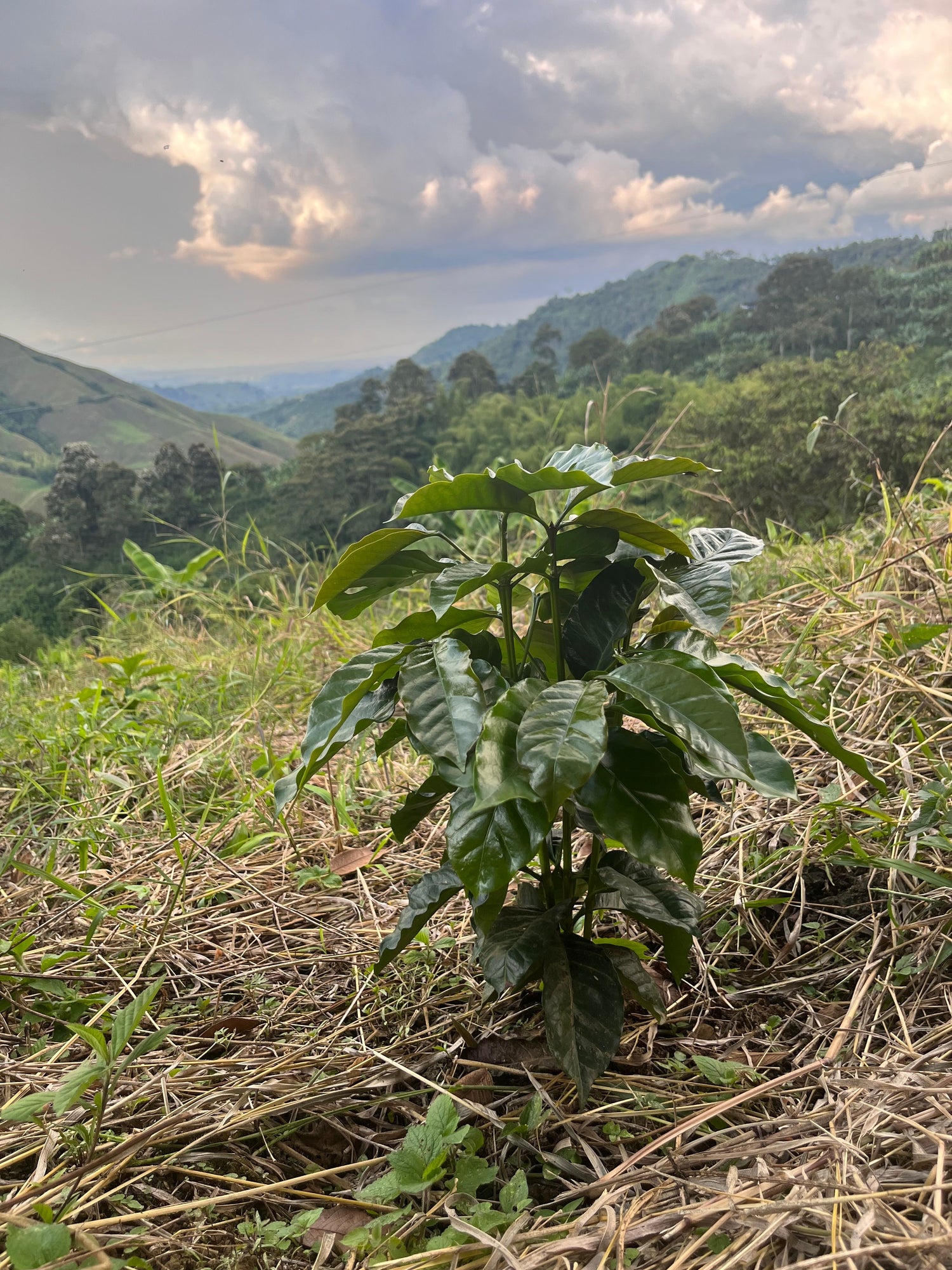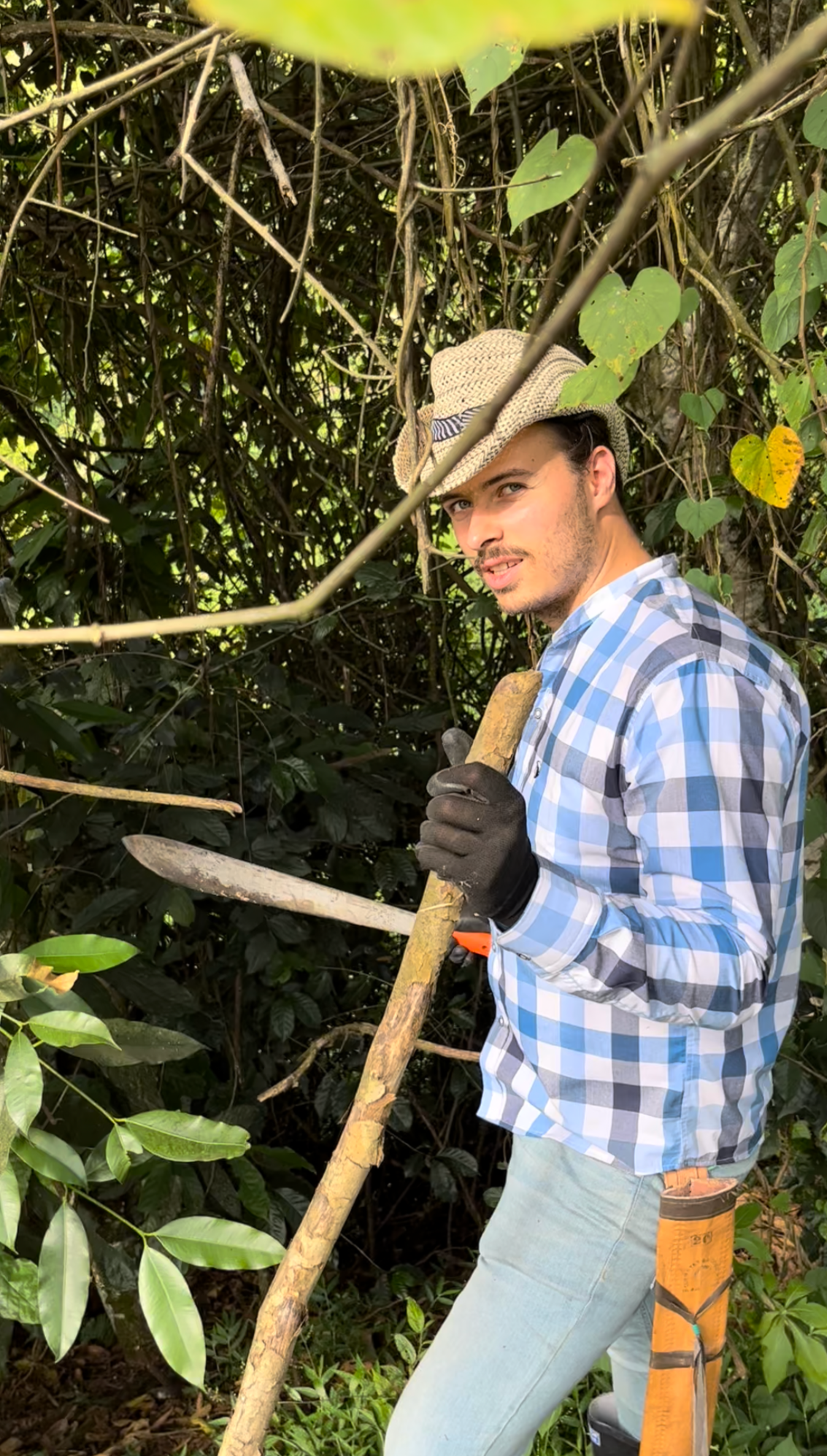Colombia is one of the largest coffee producers in the world and was ranked second behind Brazil for many years. Colombia is currently ranked fourth in the world with a harvest of 560,000 tons in 2021. To understand Colombia's success story with coffee, let's take a closer look at coffee cultivation in Colombia.
We will examine the following topics in more detail:
- What growing conditions does coffee generally require?
- Coffee cultivation in Colombia: ideal conditions?
- Where is coffee grown in Colombia?
- Which coffee growing regions are there in Colombia and how do they differ?
- Coffee Cultivation in Colombia: Tradition & Culture
What growing conditions does coffee generally require?
A decisive criterion for coffee cultivation is the ideal altitude. Arabica coffee grows at altitudes between 900 and 2,300 m above sea level. Robusta coffee grows at 200-900 m above sea level.
The height at which the coffee is grown affects the aroma. The higher the coffee is, the longer it takes to grow. Because the coffee has more time to ripen, it develops more aroma, similar to a good Bolognese. Arabica coffee is therefore considered a quality feature worldwide and accounts for around 60% of global production.
A second important criterion is the soil. The coffee plant needs nutrient-rich and "acidic" soil. The pH value should be between 5 & 6. Generally, a high natural occurrence of minerals such as calcium, magnesium, phosphorus and sodium helps. Coffee therefore grows particularly well on volcanic soils, as these are rich in nutrients and also acidic. Both of these are beneficial to the coffee plant.
The next important factor is the climate. The sensitive coffee plants only thrive in a mild climate that is as consistent as possible all year round, day and night. A good mix of sufficient sunlight and shade is also required. Five hours of sunlight a day is ideal. Coffee plants are therefore traditionally grown in tropical forests.

All plants and living things in the ecosystem then support each other in fighting pests. However, new varieties can also be planted in the sun without shade trees, which benefits industrial mass production in orderly rows. All of this often comes at the expense of biodiversity and the tropical forests that are cut down to make way for land.
Arabica coffee thrives at temperatures between 18-22 °C, Robusta coffee is more tolerant at 20-30 °C. Therefore, it can also be cultivated in lowlands, such as on the huge plantations in Brazil.
The amount of precipitation is also important. The optimal amount is 1,500 - 2,500 liters per square meter per year. By comparison, Hamburg, which is considered rainy, has had around 700 liters per square meter of annual precipitation in recent years.
Coffee cultivation in Colombia: ideal conditions?
Let's first take a closer look at the landscape in Colombia, then the climate. Colombia is a very diverse country for its small area. There are Caribbean sandy beaches, high and even partly snow-covered peaks, jungle and desert.
The central and western part of the country is mainly characterized by the Andes. Three mountain ranges run through the country from north to south, so-called “Cordilleras”:
- the western mountain range "Cordillera Occidental"
- the central mountain range "Cordillera Central"
- the eastern mountain range "cordillera oriental"
These Cordilleras are almost 6,000 m high at their highest peaks. The highest point is the Pico Christobal Colón together with the Pico Simón Bolívar, which are at an altitude of 5,775 m. Both peaks are located in the "Sierra Nevada" mountain range (snow-capped mountains). This mountain range is part of the "Cordillera Central" and the high peaks are only about 45 km away from the Caribbean beaches of the city of Santa Marta. This makes it the highest coastal mountain range in the world.
In the high mountains along the Cordilleras there are many volcanoes, some of which are even active:
- Galeras (4,276 m)
- Nevado del Huila (5,364 m)
- Nevado del Ruiz (5,321 m)
- Puracé, Nevado del Tolima (5,215 m)
- Nevado de Santa Isabel (4965 m)
Two important factors come together here:

Mountain ranges and volcanoes that have enriched the soils of the mountain ranges with important nutrients. So there is high-altitude, very fertile land.
Now if only the weather would play along...
Colombia, like all coffee-growing countries, is located in the tropical zone near the equator. This zone is also known as the coffee belt.
Due to its location on the equator, the climate is mild and tropical all year round with plenty of sun and humidity. Clouds coming from the Pacific rain down in the Andes and sometimes cause rainfall of up to 3,000 litres per square metre. The temperature in the Andean belt is between 17-24 °C depending on the region and altitude. The temperatures are consistent all year round and also stable throughout the day.
Ideal climatic conditions for coffee cultivation.
Overall, the Andean belt in Colombia creates perfect conditions for growing Colombian coffee. This, in turn, is high quality and rich in flavors thanks to the good conditions. This is why Colombia and coffee are a strong team.
The good conditions in the Andean region allow for the appropriate care of a coffee plant. Regular rainfall means that there is no need to water the plants by hand. When grown in an ecosystem, there is enough variation between light and shade and the nutrient supply is improved.
Where is coffee grown in Colombia?
The answer: Throughout the country, on the Andes. Because Colombia is crossed by three mountain ranges, there is not just one coffee growing region. Many areas throughout the interior of the country and even on the coast off Santa Marta are suitable for growing coffee.
Which coffee growing regions are there in Colombia and how do they differ?
Coffee is grown in Colombia at altitudes of 1,200 - 2,000 m above sea level. Therefore, the growing areas coincide with the location of the three mountain ranges of the Andes, which run through Colombia from north to south.

The colors on the map give a rough overview of the different growing areas. The color distinction is made here depending on the harvest time.
The main differences between the various growing areas in Colombia are determined by geography. Even though all the growing areas are located in the three mountain ranges of the Andes and, globally speaking, in the same climate zone around the equator, there are significant differences, even in the climate.
How does this happen?
First of all, the terrain itself is a factor. There are areas that are very rugged and consist only of steep slopes and small valleys. Other areas also have flat land, which makes harvesting easier. However, this is rather the exception in the Andean country of Colombia.
The different altitudes influence the climate. The Cordilleras are not uniform and there are some very high cultivation areas around 2,000 m above sea level and also lower cultivation areas around 1,200 m above sea level. This means that the temperature fluctuates in the different cultivation areas, which affects the speed at which the coffee cherries grow.
This affects the number of harvests possible and actually the taste is affected. If you are interested in the effect of the growing regions on the taste, you can find out more about it here .
Rainfall and hours of sunshine also vary in the different growing areas, both in terms of quantity and timing. These factors mainly influence when the harvest takes place and they also influence how many harvests there are per year. Coffee can be harvested almost all year round in the different growing areas in Colombia. In some areas there is only one harvest, in others there are even two harvests per year. Here you can learn more about the coffee harvest in Colombia.
Coffee Cultivation in Colombia: Tradition & Culture
Colombia is one of the most traditional coffee growing countries. Coffee, which originally comes from Ethiopia, was first cultivated there in the 1700s.
According to legend, coffee was brought to Colombia by the Jesuits around the year 1700. At first, the new coffee plant was not very popular with farmers. It takes about three years from planting the seed to the first harvest without any yield. You can find out more about the life cycle of the coffee plant and how to care for the coffee plant here .
The coffee plant owes its widespread popularity to a clergyman who had coffee plants grown in his parish as a way to forgive sins, as an alternative to the European “indulgences”. What began hesitantly eventually led to a boom when people realized the economic benefits of growing coffee.

Due to the long history of coffee, a culture has developed around coffee in Colombia.
Coffee is a source of national pride here, and rightly so. In Colombia, coffee farmers traditionally place great value on quality. Unlike in many other coffee-growing countries, coffee here is mostly cultivated by many small farmers and not by huge plantations and corporations.
In addition, the location of the so-called coffee fincas in the middle of the mountainous Andes generally does not allow for industrial harvesting methods. This inevitably means that better quality methods are used by hand.
Overall, the “Coffee-Made-in-Colombia” brand stands for the best quality.
The most famous growing region in Colombia is also the cultural epicenter for coffee: The Coffee zone , known in Colombia as " eje-cafetero " . This means coffee axis. The name comes from the fact that, despite the small size of the area, a large part of Colombia's coffee production was made here throughout history.


The area has even been declared a UNESCO World Heritage Site. There you will find the so-called “Paisaje cultural cafetero”, which means something like cultural coffee landscape. This consists of many fincas in the middle of spectacularly beautiful landscapes with coffee plantations in the middle of the mountainous Andes. Colorful little villages, such as Salento, are hidden between the green peaks.
Do you find Colombian coffee as fascinating as we do? What's wrong with trying it out, in its purest form? Traded directly from a farmer you trust. Take a look around!






